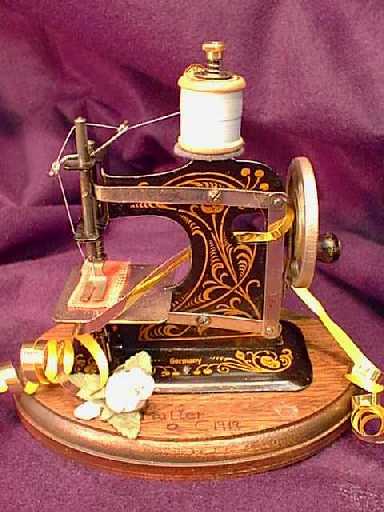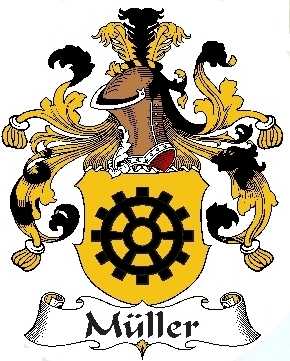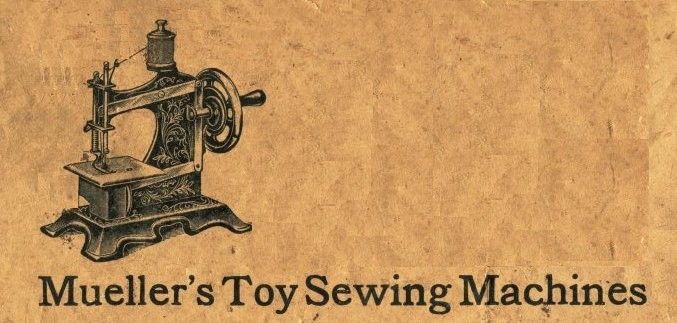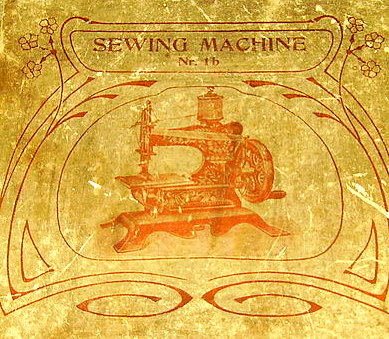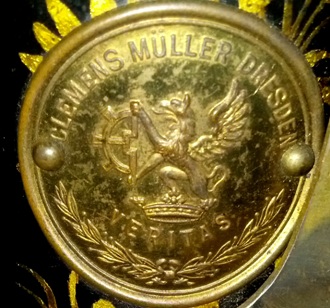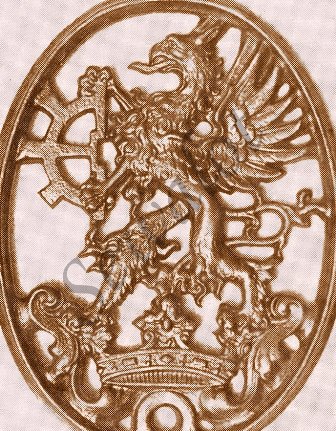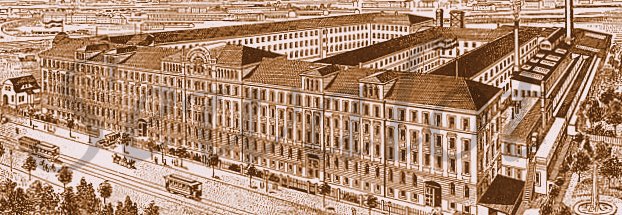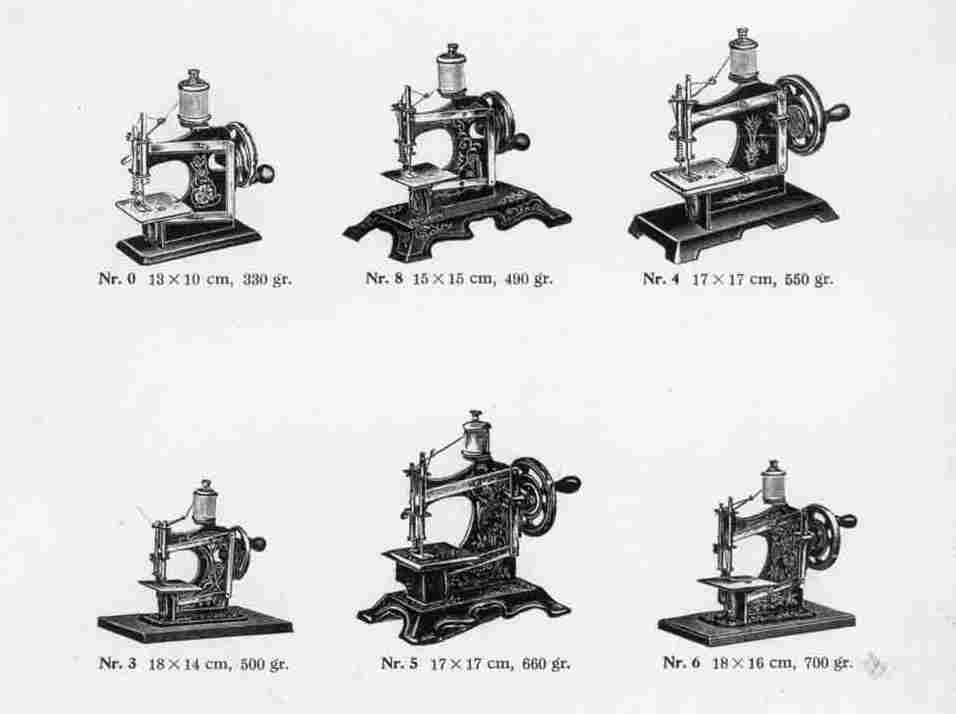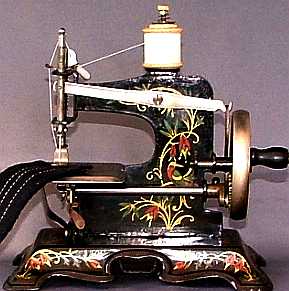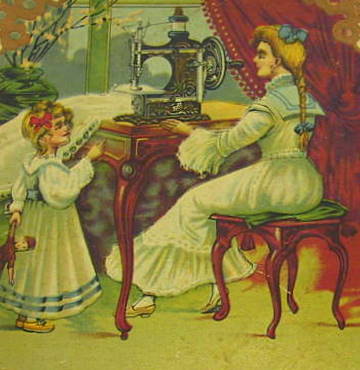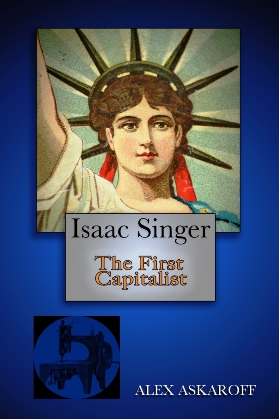|
||||
|
|
Muller toy sewing machine
Okay this is a little tricky. There were two German Muller sewing machine companies. One made mainly full-sized sewing machines and one mainly toys. The toy factory was founded by Friedrich Wilhelm Muller in Berlin in 1868 when he borrowed money for a lathe and went into business in a small workshop making sewing machine parts for his good friend Nikolaus Durkopp who was in Bielefeld, Germany. For 20 years the business made parts but Friedrich Wilhelm Muller saw a hole in the market for toy sewing machines and in 1888 turned to the manufacture of complete toy sewing machines which ran from 1888 right up till the 1970's. They were one of the largest manufacturers of small sewing machines in the world. Simple pressed sheet steel, tin-plate sewing machines sold in their thousands. It seemed like every child wanted what her mother was using and business boomed.
To confuse matters there were three distinct spellings of the Muller name as you can see from the adverts.
The company made millions of toy sewing machines for over a century. The factory in Berlin, Germany, also produced a variety of goods from safes and letter openers to fret saws and pencil sharpeners. Now the other Muller was Clemens Muller who made full size machines so I have combined a little of both here. Clemens Muller is considered one of the pioneers of the German sewing machine industry, born in 1828 he was the son of a Dresden Weaver. Clemens Muller started making sewing machines as early as 1855 just a few years after Isaac Singer had patented his first machine in 1851. After initial difficulties the factory boomed and produced thousands of machines. Clemens Muller sent his son, Ferdinand, to America, the centre of the early sewing machine industry. Here Ferdinand Muller learnt many useful manufacturing tips which he brought back home. By 1888 the same year that Friedrich Wilhelm Muller started producing toy sewing machines Ferdinand Muller took over from his father, Clemens, and took the helm of the giant German manufacturing machine.
Ferdinand Muller expanded and expanded and started new factories and kept on enlarging his range. By 1910 he had seen the potential in typewriters and later produced countless numbers of these. It was a stoke of genius as the Muller factory was one of the few that managed to expand in the 1920's when Germany was crippled with debt. By the 1930's Ferdinand Muller's factories had produced millions of machines, but war was coming.
In the blanket bombing of Dresden the Muller factory was destroyed but after the war was rebuilt as the VEB Writing & Sewing Machine Company. Now back to the toys of Friedrich Wilhelm Muller. It is a strange fact that the Muller 0 came much later than the Muller No1. The Muller model six A Muller 6 machine sold in Oct 2014 reaching fine price $1,322. The Muller model 6 1894-1914 One of the prettiest of all the Muller toy sewing machines was the Model No 6.
There were at least three different models including a later model walking foot. The later design was to help the work feed through with a walking foot but it made little difference. The unusual feeding of the fabric towards the operator rather than away was never explained. By the outbreak of the Great War in 1914 the Muller No 6 was no more. The Muller No 6 is possibly the most sought after of all the toy range and prices for superb models like this can go sky high some fetching over $2,000.
Muller toy sewing machine
The Muller model 14 was first designed in 1910 and ran right up to the outbreak of WWII in 1939 when production ceased. This model uses a rotary hook to produce its chain stitch and was very popular. The machine design was often referred to as The Bird of Paradise.
News
Flash! Copyright © Contact: alexsussex@aol.com
|
|||
Sewing machine Tension problems SORTED at last!
|
||||
